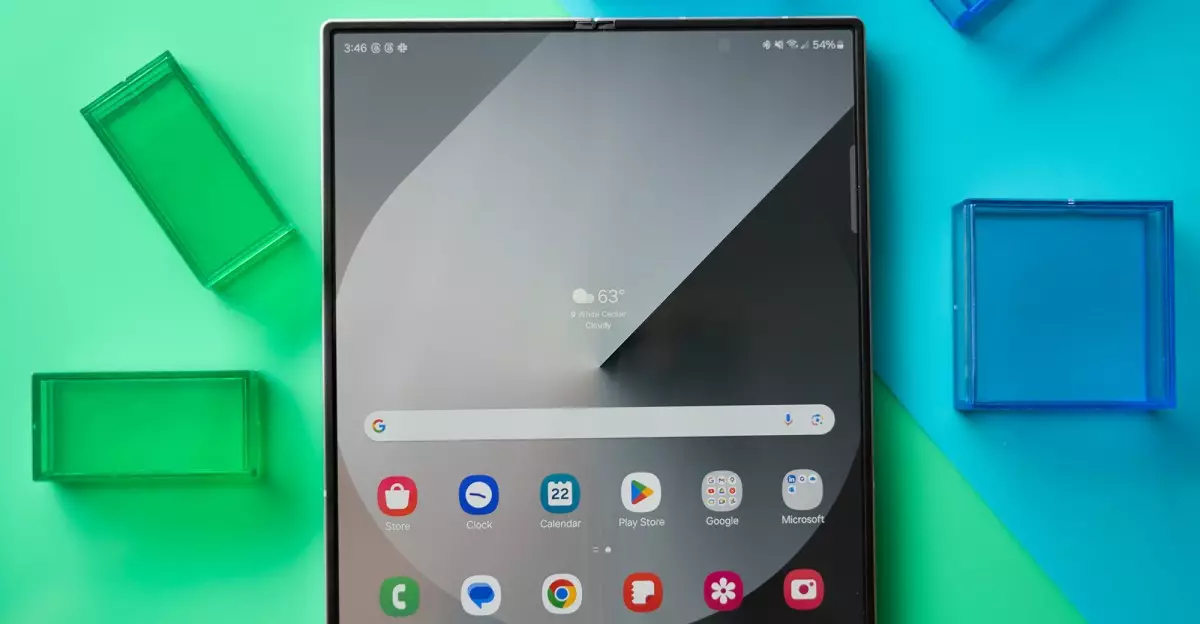In the fiercely competitive smartphone arena, Samsung seems poised to make a dramatic statement with its upcoming foldable lineup. After years of iteration and incremental improvements, the company appears to understand that mere hardware updates no longer suffice to captivate an increasingly skeptical audience. Instead, Samsung’s recent strategies suggest a serious effort to redefine what foldables can offer, possibly elevating them from niche curiosities to mainstream essentials. But the question remains: will these innovations be enough to persuade consumers who are still hesitant to fully embrace foldable technology?
Despite its pioneering efforts, Samsung struggles with conversion. The foldable market remains a tiny fraction of the global smartphone industry, with skepticism stemming from concerns about durability, utility, and cost. Yet, Samsung continues to invest heavily, signaling that it recognizes the potential long-term gains. With rumors swirling about a flagship Ultra model, thinner profiles, larger external screens, and more competitive pricing tiers, the company might have identified the key levers needed to shift consumer perception. Still, these strategies face stiff headwinds—namely, durability issues and the high price tags that keep foldables out of reach for many.
Market Dynamics and Consumer Resistance
The slow adoption of foldables reveals a harsh truth: consumers are curious but cautious. Many want the innovative form factor but are deterred by fears of fragility and repair costs. While marketing can highlight cutting-edge features, it cannot mask fundamental issues. For instance, foldables are more vulnerable to dust infiltration and accidental damage due to their intricate hinges and foldable screens. Despite Samsung’s promises of improved dust resistance and more refined designs, achieving full IP68 waterproofing on foldables has remained elusive—a glaring gap given how consumers increasingly demand durability for their premium devices.
Price is another formidable barrier. Foldables are significantly more expensive than traditional smartphones, often exceeding $1,500 for top-tier models. This premium pricing, coupled with the perception of trade-offs—such as bulkiness or compromised screen technology—limits mass appeal. Even in the most optimistic scenarios, these devices feel like luxury items or aspirational gadgets rather than everyday essentials. Consequently, Samsung must not only upgrade hardware but also rethink affordability and value proposition for a broader audience.
Innovation as a Catalyst for Expansion
Looking ahead, Samsung’s plans hint at a strategic shift from incremental upgrades to groundbreaking innovations. The rumored Ultra model, with a slimmer profile and superior build quality, signals an understanding that form factor and durability are paramount. By potentially introducing an Ultra foldable that rivals the thickness of standard phones, Samsung could bridge the cosmetic gap between foldables and slabs—making the former more appealing and less conspicuous.
Furthermore, the reinvention of the external display through a Razr-style cover screen that maximizes usability could address critical everyday inconveniences. Large external screens enable users to interact more comfortably without unfolding the device constantly—a crucial factor in increasing practicality. Additionally, expanding the product line to include more affordable models with familiar designs might entice newcomers hesitant about the current premium price range.
Emerging Competition and Market-Shifting Potential
However, Samsung’s future dominance in foldables hinges on more than just its innovations. The tech ecosystem is witnessing a potential game-changer: Apple’s much-anticipated foldable, believed to be arriving around 2026. An Apple foldable, with its entrenched brand loyalty and ecosystem integration, could catapult the entire foldable market into mainstream territory. If Apple’s entry significantly broadens consumer interest, Samsung’s existing efforts may finally realize their full potential.
Given this context, Samsung’s push for multiple models across price tiers might be a prudent move. Offering a range of foldables—from more affordable, less complex devices to ultra-premium, feature-rich models—could position Samsung as the industry leader in the space. They have historically succeeded by targeting different segments, and applying this approach to foldables could generate sustainable growth.
Ultimately, whether Samsung’s bold innovations will succeed in capturing widespread consumer interest depends largely on their execution. Durability, price, and usability remain the chief hurdles. But if Samsung can turn these weaknesses into strengths—by making foldables more affordable, resilient, and seamlessly integrated—they could truly revolutionize mobile technology, making foldable phones an everyday reality rather than an occasional novelty.

